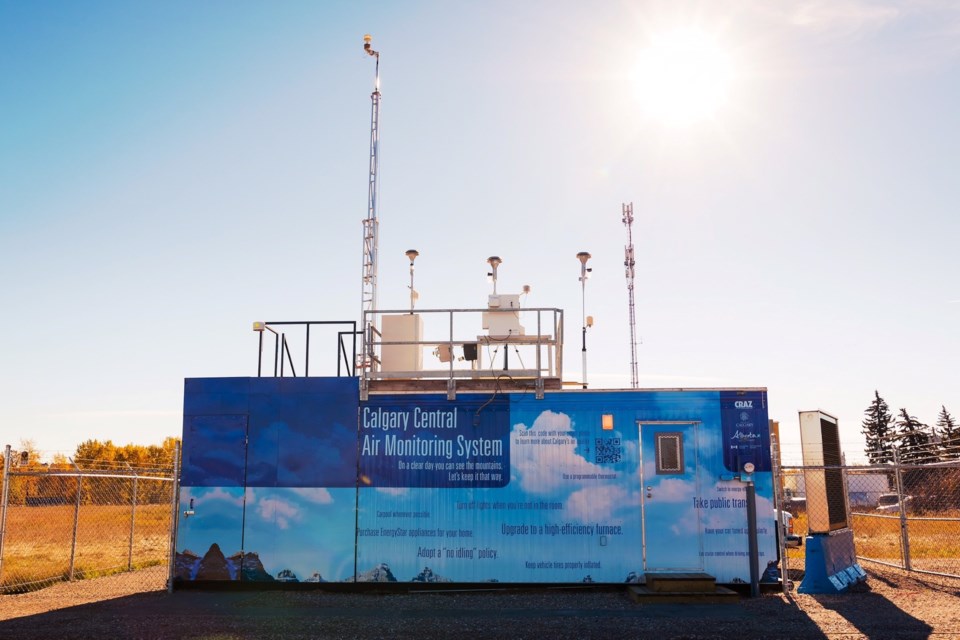To ensure air quality monitoring throughout the region, Rocky View County (RVC) is reinstating its membership in the Calgary Region Airshed Zone (CRAZ).
During the April 5 meeting, RVC council directed $4,102.80 to be included in the spring budget finalization for council’s consideration. The $4,102.80 cost for the County’s membership in the CRAZ reflects a rate of 10 cents per capita.
The CRAZ is a non-profit organization that monitors, analyzes, and provides information on air quality. The CRAZ also develops strategies to manage air quality issues within the region, which includes RVC.
RVC was a member of the organization until 2020, when it was discontinued as a cost savings measure.
As part of the membership, RVC will have access to air quality specialists, be a partner in outreach campaigns, fulfill legislated requirements, advocate to the province, and have access to real-time data. The CRAZ’s technical committee looks at data and comes up with recommendations.
Jill Bloor, executive director of the organization, told council the general state of air within the CRAZ is very healthy, with limited impact roughly 97 per cent of the time.
“The thing is that air has no boundaries,” she said, noting that wildfires from other regions in the U.S. and British Columbia have huge impacts on the air in this region every year.
When it comes to local industries or development projects that may increase the risk of air pollution, Bloor said the CRAZ does not become involved until the public consults the organization about their concerns.
“We are not a regulator, we’re not an investigator,” Bloor said. “We can be a consultant to the municipality in our technical committee.”
According to Bloor, residents came forward with concerns regarding the Calgary ring road project, and the CRAZ moved their equipment to get proper air quality readings, which in turn helps them introduce mitigation processes.
Several other projects were brought up by council, including the Springbank Off-Stream Reservoir project and gravel extraction operations throughout the county.
Bloor noted that in the CRAZ, transportation is the largest emitter, which is what a lot of their school education programs are focused on.
The CRAZ is one of 10 airsheds in the province and has been around for 15 years. It covers the largest population of any airshed, with 1.8 million people calling the region home.
The CRAZ currently has three continuous ambient air monitoring stations in northwest Calgary, Inglewood, and southeast Calgary. A fourth station in Airdrie is operated by Alberta Environment and Parks.
A portable monitoring laboratory is also used, according to Bloor, as well as purple air sensors located at the RVC offices, between Water Valley and Crossfield, and outside of Airdrie.
Bloor explained that the purple sensors mainly monitor respirable particulates (PM2.5) that have the biggest impact on the human health of any breathed-in compound.
“There is no safe level of exposure to PM2.5, but if you’re healthy, you can deal with it,” Bloor said. “If you have respiratory issues, if you’re older or young, then it impacts your health.”
The data from the stations form the Air Quality Health Index, which is a tool that measures air quality in the community on scale from one to 10. According to the presentation, this chart primarily looks at PM2.5, ozone (O3), and nitrogen dioxide (NO2).
Bloor noted that Canada is the only country that has an air quality health index.
According to data from the CRAZ, an estimated 377 premature mortalities per year occur due to air pollution in the region. That equates to 23 out of every 100,000 people.
In addition, approximately 239 adult chronic bronchitis cases and 1,167 child acute bronchitis episodes are reported annually in the CRAZ. At the same time, approximately 202 emergency room visits and 57 hospital admissions result from air pollution annually.
The CRAZ estimates air pollution regionally costs $2.94 billion a year, or $2.78 billion from premature mortality and $160 million from illness, disease, or lack of health.
Aside from school programs about air quality and free station tours, the CRAZ also offers industry workshops on air pollution and reduction strategies. Workshops are a result of industries reaching out for information on what they can do.
Bloor noted they would love to work with RVC to create an idle free zone program.
For more information on the CRAZ or to file an air quality concern, go to craz.za


